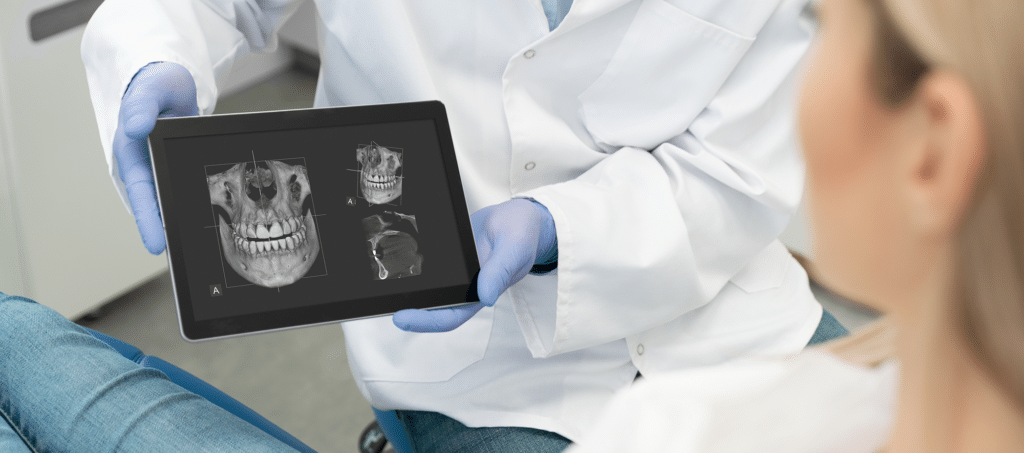Digital X-Rays
At AV Sierra Dental Center, one of the many ways we provide superior dental care is through the use of dental X-rays that allow our Palmdale dentists to detect decay and disease earlier than what’s possible with a basic oral exam. Digital X-rays, also known as digital radiographs, are quickly taking the place of traditional film-based dental X-rays and have become one of the most important advances in dental technology today, offering our patients substantial benefits. As a new patient, you will most likely receive a dental X-ray; Dr. Oh may also choose to have one taken if you have signs or a history of disease or decay or if your teeth are touching and making it difficult to see all surfaces.

What Is a Digital X-Ray?
During a digital X-ray, a small sensor is placed inside your mouth instead of the traditional paper tabs that fit awkwardly and often cause pain. The sensor is connected to a computer by a thin, unobtrusive wire and records a highly detailed image of your mouth. The image is then sent to the computer, where it is instantly projected onto a screen for the dentist to review.
The two primary types of dental X-rays are intraoral (taken from inside the mouth) and extraoral (taken from the outside). Bitewing X-rays are the most common type of intraoral radiograph. Traditionally, uncomfortable pieces of film were placed inside the mouth for the patient to bite down on while the X-ray was being taken. With digital technology, the small sensors make this type of imaging much more comfortable. A panoramic X-ray is an extraoral X-ray in which a machine rotates around the head. The resulting images allow the dentist to see the entire mouth at once.
What Are the Benefits of Digital X-Rays?
Digital X-rays benefit both patients and dentists alike in many ways. Benefits include:
- Reduced chair time and wait time — results are instant and highly accurate.
- Improved imaging — images can also be sharpened, enlarged, and optimized in a variety of ways that improve diagnostic proficiency.
- Less radiation — the radiation exposure from digital imaging is 80% less than from traditional X-rays.
- Decreased environmental impact — digital X-rays eliminate the material and chemical waste produced by traditional film-based X-rays.
FAQ
The frequency with which you will need to have dental X-rays depends on your overall oral health. If you are suffering from dental decay or disease, you may need to be X-rayed every six months. If you are in good oral health, you may only need a dental X-ray every couple of years.
Though dental X-rays do require very low doses of radiation exposure, they are considered very safe. The use of digital technology further reduces the level of radiation you receive from a dental X-ray.
At AV Sierra Dental Center, the use of digital X-rays allows us to provide you with the dental experience you deserve. Decreased anxiety and precise diagnosis allow for your increased comfort and confidence in our commitment to helping you maintain a healthy, bright, white smile for years to come.


